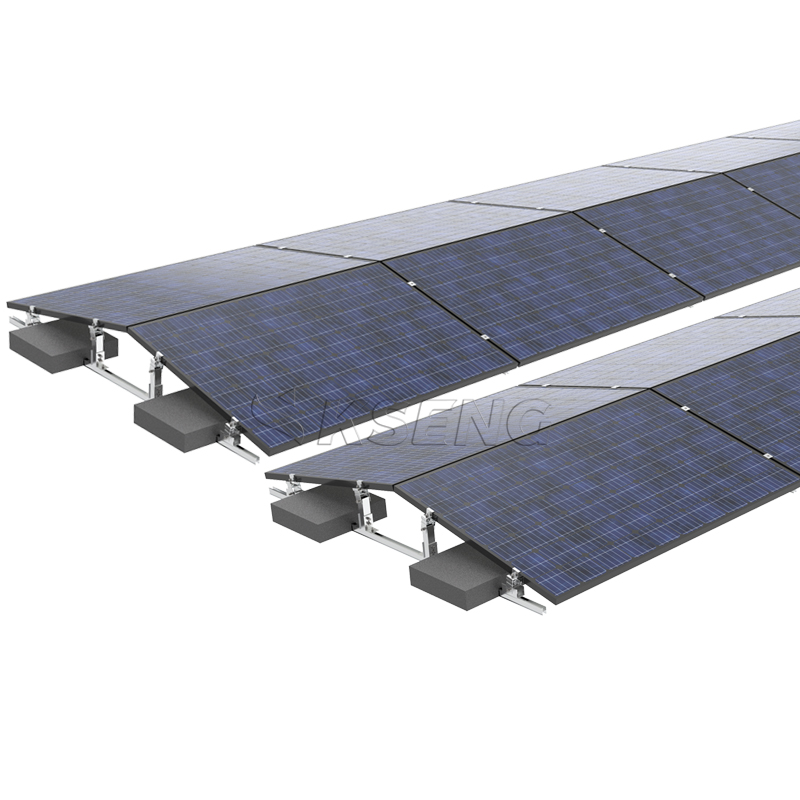Solar panel flat roof mounting is one of the most common methods of integrating a solar system into any house. Panels have been well studied to determine how they can be installed on the roof without compromising the house’s structural integrity.

Solar installation on a flat roof is not complicated and can easily be installed on domestic properties. This article focuses on everything you need to know about solar panel mounting on rooftops. We have carefully selected the top questions most property owners ask and created comprehensive answers to help you understand solar panel installation.
The simple answer is yes; you should tilt your solar panel when installing. Solar panels are rarely laid out flat on a rooftop. This is because tilting the solar panels helps them produce maximum energy.
When the solar panel is laid out flat on a flat roof, i.e., when it is parallel to the roof, it can only produce energy when sunlight is directly incident to it. This only happens around 11 AM to 2 PM, depending on the location of the house. As a result, the solar panel does not perform at its highest level, and the energy output is extremely low.
In contrast, if the solar panel is tilted on a flat roof, then the sunlight can be incident for a longer period. This allows the solar panel to produce maximum energy and work significantly more hours. This higher energy conversion allows your property to be more solar energy reliant.
Since the aim of solar installation on a flat roof is to produce maximum energy, the angle of the solar panel should be very specific. The solar panel angle depends entirely on the location of the property. For example, in the southern hemisphere, in countries like Indonesia, the solar panel angle is usually 60 degrees. In contrast, in the northern hemisphere, in cities like Marseille, the solar panel angle is usually between 50 and 55 degrees.
Therefore, the angle of the solar panel should be adjusted depending on the location. Solar panel angles are usually common for all panels in one city. Therefore, if your neighbor’s solar panel angle is 50, then yours will be the same.
Most solar panels are designed to handle wind pressure of 150 kilometers per hour. However, solar systems can also be customized to stand higher wind pressure. While the panel itself cannot be customized, you can customize the solar panel mounting stands to ensure that it will not blow off.
Wind damage on solar panels is rare. However, the chances of wind damage are higher in some special cases. For example:
Most solar panel manufacturers customize solar panel mounting stands according to the requirement of the region. In addition, you can also request customization in case your property faces higher wind pressure than others. However, it is worthwhile to note that most solar panel warranties do not cover damage as a result of wind pressure.
Solar installation on a flat roof is significantly different from installing other HVAC systems in the house. As a result, solar panels can face several problems. Here are some problems you might face if you install solar panels on the rooftop:
Electrical wiring issues are quite common for all households. Under this category, your solar system may not face the issue; however, another wiring in the house might. These include loose connections, corrosion, and so forth. Thankfully, it can be fixed by calling an electrician.
Internal corrosion of your solar panel can occur if water seeps into the solar panel. Most solar panels are designed to be air and water-tight. However, if the panel is damaged, it cannot be fixed and should be replaced.
Poor design and a solar installation on flat rooftops can cause problems to the water lines and electrical wires on the roof. This can cause leakage from the pipe, which can damage the roof. A solar expert should be called to assess the situation.
Every rooftop is not suitable for solar panel installation. Before you purchase a solar system and call an expert to install the panel, you should have your roof inspected. Roof inspections can determine the suitability of the roof for installation. Some of the factors that are assessed include the following:
Using these five factors, the expert will determine if your roof is suitable for installation or not.
Solar panel installation is not a simple task. While most manufacturers provide solar panel raking as well as all other electrical and installation requirements, you still need an expert to ensure the solar panel installation is seamless.
Conclusion
There are many ways to install a solar system, and all of them depend entirely on the project requirement and the property. Solar installation on a flat roof is one of the best ways to make your property energy efficient. However, instead of using DIY videos, we recommend calling an expert to do the job for you. If you are looking for experts on solar panel roof mounting, Kseng solar is the ideal partner.